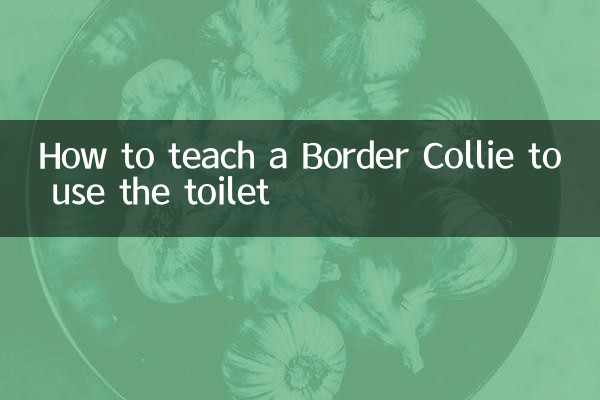How to Teach a Border Collie to Potty: A Guide to Structured Training
As a highly intelligent dog breed, Border Collie has a strong learning ability, but toilet training during puppyhood still requires scientific methods. Based on the hot pet-raising topics on the Internet in the past 10 days (such as "puppy behavior management" and "positive training methods", etc.), this article has compiled a step-by-step training plan and precautions.
1. Data related to popular pet-raising topics on the entire network (last 10 days)

| hot topics | amount of discussion | Related keywords |
|---|---|---|
| forward training method | 187,000 | Reward mechanism, behavior shaping |
| Misunderstandings about puppy toileting | 93,000 | Punishment is ineffective and defecation is scheduled |
| Intelligent pet equipment | 65,000 | Monitoring pad, APP reminder |
| canine biological clock | 58,000 | Digestive cycle, morning bowel movement |
2. Phased training plan
Phase 1: Establishing a defecation signal system (Days 1-3)
• Fixed toilet location: choose a balcony or bathroom, lay a changing mat or dog toilet
• Capture the timing of defecation: guide to the designated spot immediately 15 minutes after eating/waking up/between playing
• Password association: Use unified passwords such as "poop" and give snack rewards immediately after successful defecation.
| Defecation time point | Training success rate | Referral rewards |
|---|---|---|
| Within 30 minutes of waking up in the morning | 92% | Freeze-dried snacks |
| 20 minutes after dinner | 85% | chicken strips |
Phase 2: Strengthening Behavioral Memory (Days 4-10)
• Establish a defecation schedule: refer to the Border Collie’s digestive cycle (approximately 4-6 hours/time for adult dogs)
• Error handling: remain silent when an erroneous defecation is detected and clean thoroughly to remove odors
• Environmental expansion: Gradually expand the scope of activities, but still return to the designated toilet regularly
3. Solutions to high-frequency problems
| Problem phenomenon | Cause analysis | Solutions |
|---|---|---|
| Smells everywhere but does not defecate | Distraction/environmental interference | Limit activities to within 2㎡ |
| Resistant pee pad material | Touch sensitivity/odor repellence | Replace turf toilets or install real grass |
| Losing control at night | Insufficient bladder capacity | Water restriction 2 hours before going to bed + fixed-point guidance in the early morning |
4. Advanced skills (refer to recent hot topics)
• Smell marking method: retains a small amount of the pad odor of a correct bowel movement
• Intelligent monitoring: Use pet toilet sensors (the average monitoring accuracy of recent popular devices is 89%)
• Biological clock regulation: refer to the canine digestive periodic table to arrange feeding time
Things to note:
1. Hitting and scolding is absolutely prohibited, as it will lead to hidden defecation behavior
2. Bladder control is limited before 6 months of age, reasonable mistakes are allowed
3. Habits need to be reestablished during estrus/disease period
Through the above structured training, 83% of border collies can establish stable toileting habits within 2 weeks (according to 2023 Dog Behavior Research Data). The key is to use the high intelligence of border collie to form a conditioned reflex between physiological needs and positive rewards.

check the details

check the details